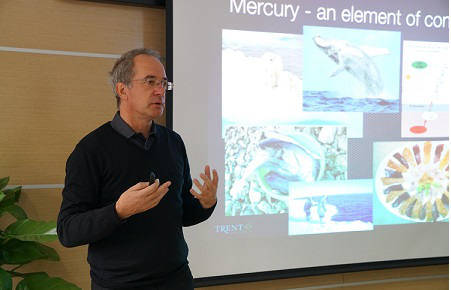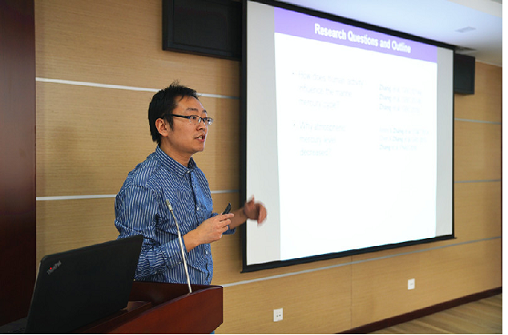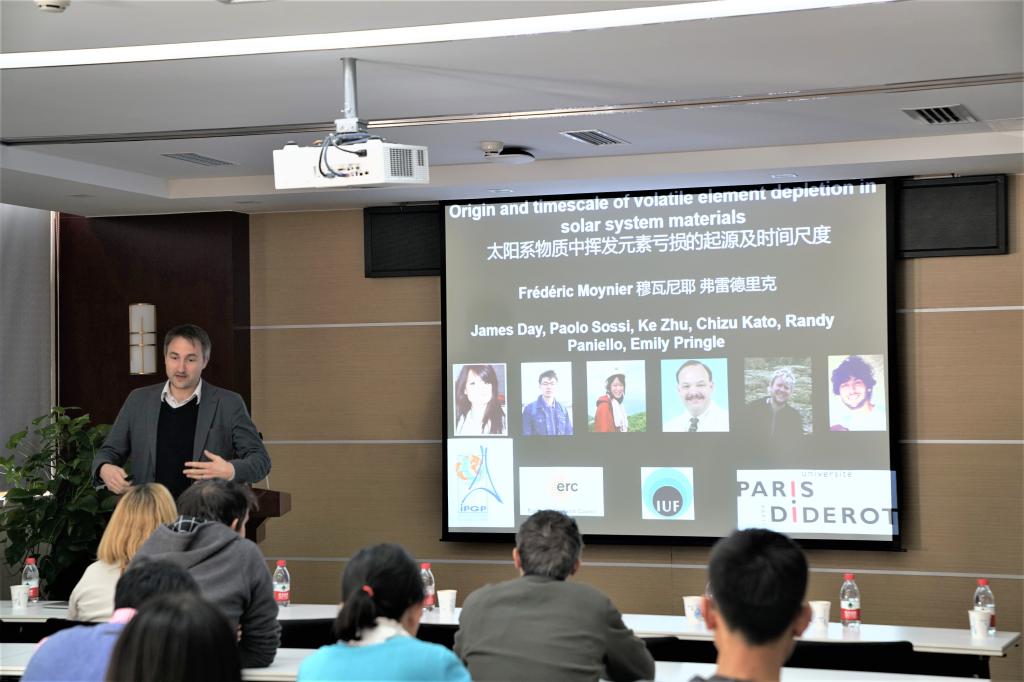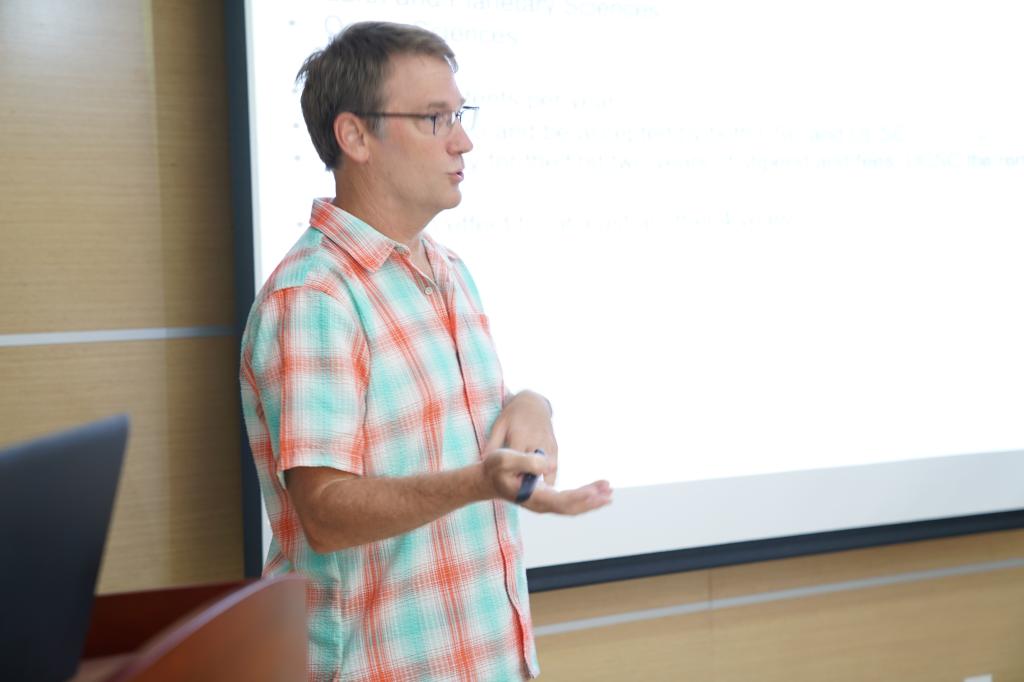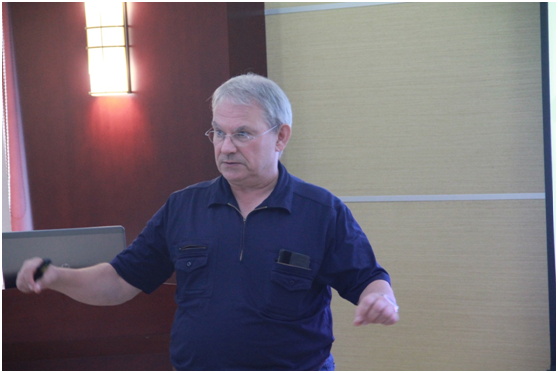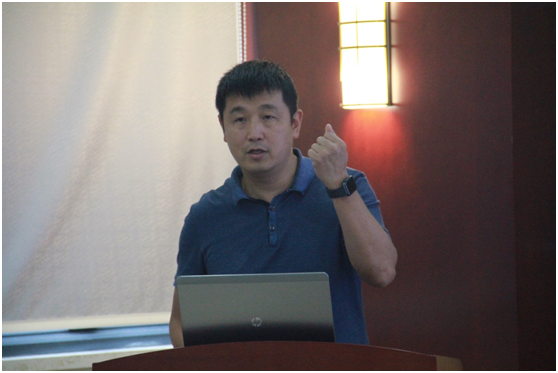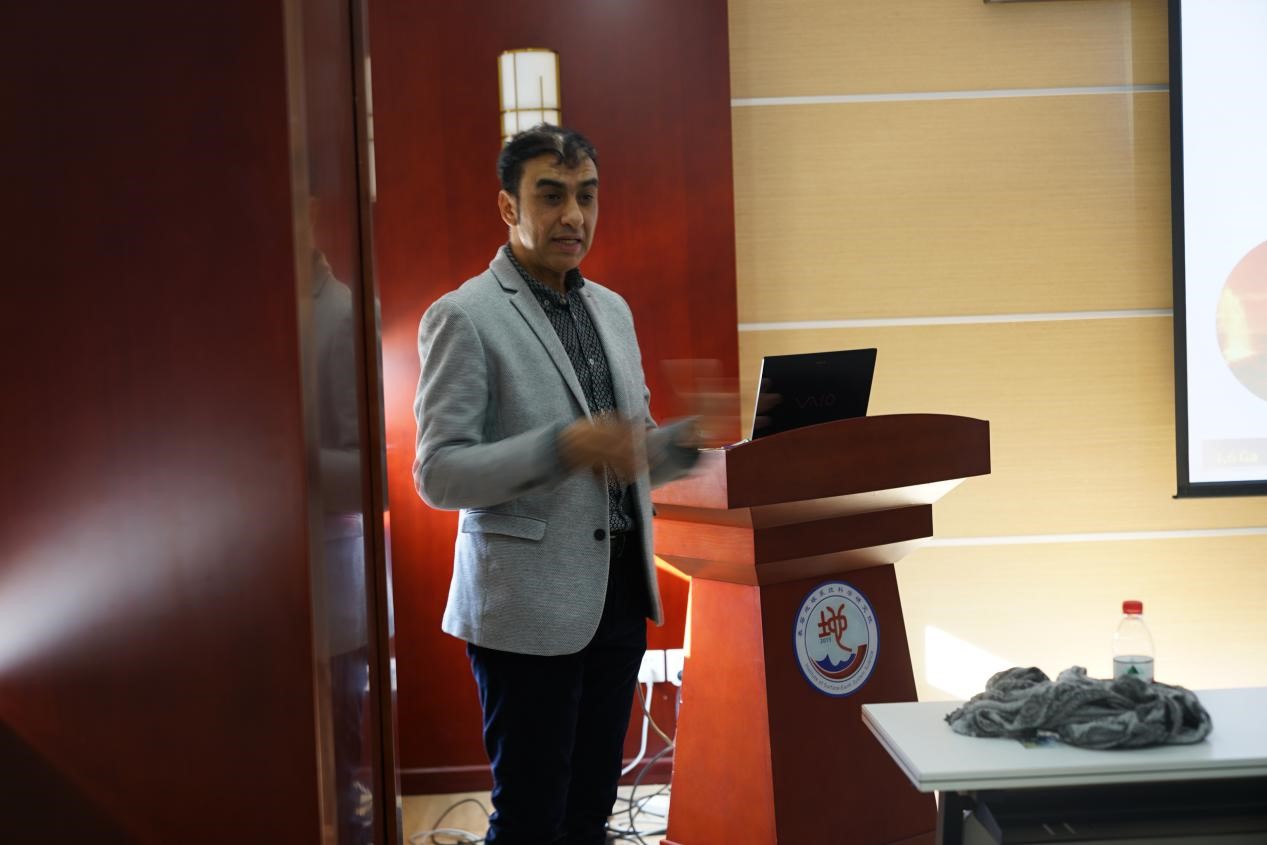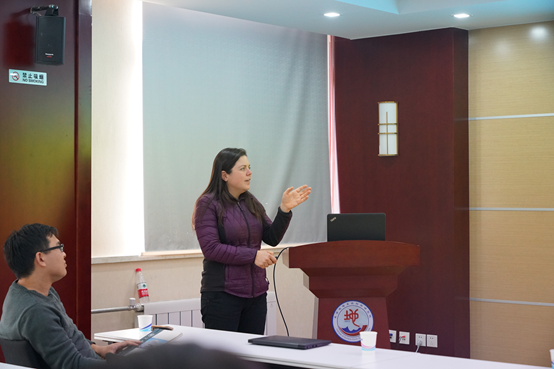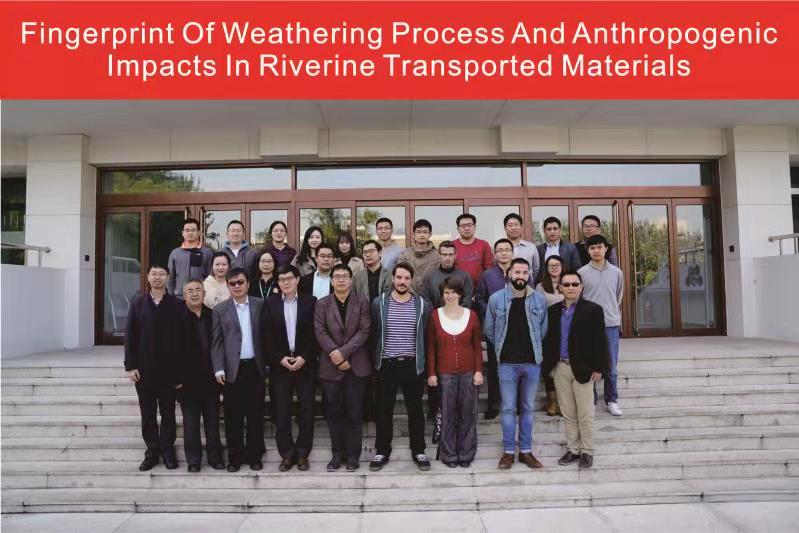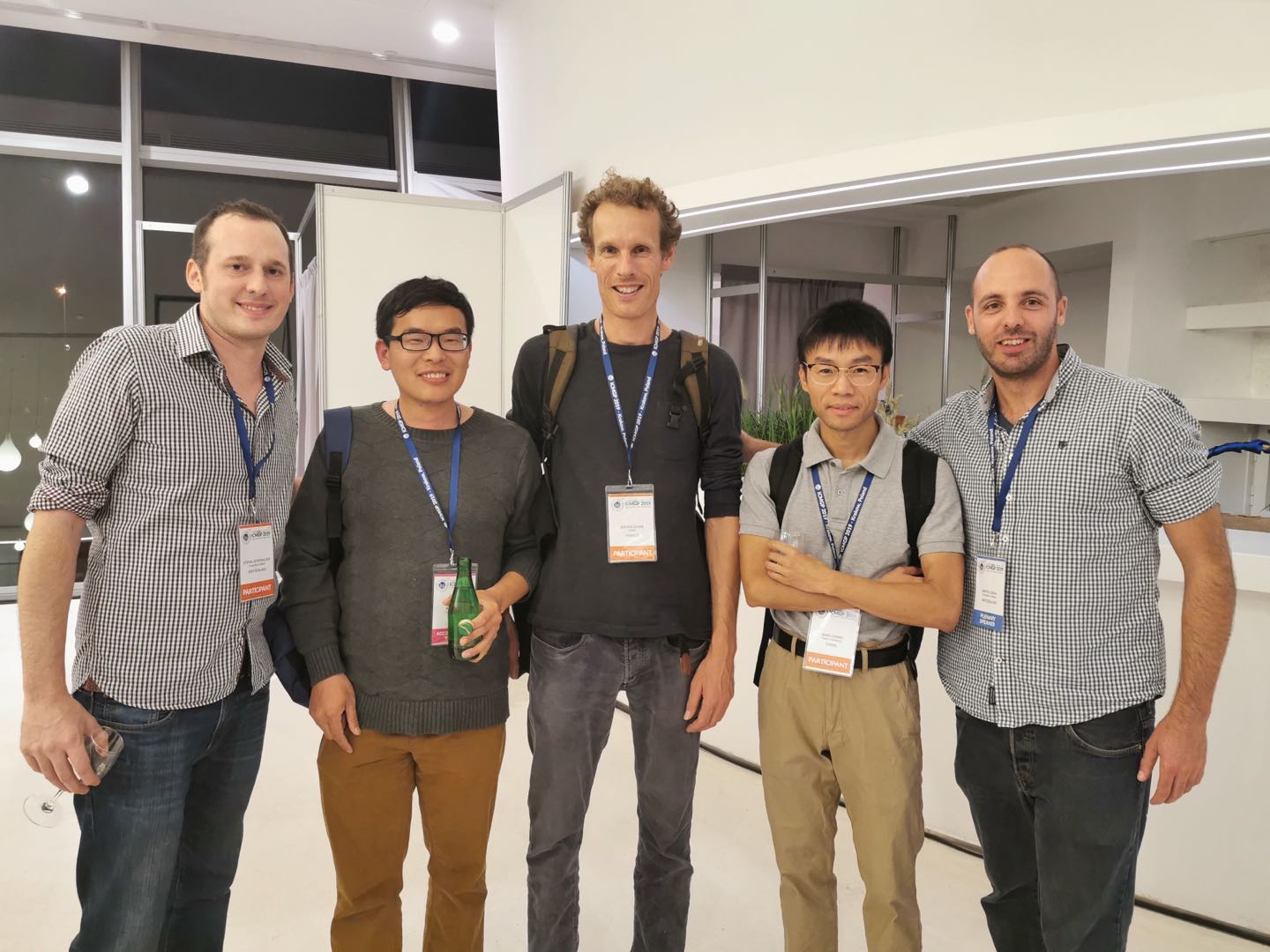Research direction
1. New theory of isotopic geochemistry
Building on the basic theories of physics, chemistry and biology, and by means of theoretical models, experimental observations and other research methods, CASI will explore the fractionation mechanisms and variation characteristics of non-traditional (metal) isotopes, improve the current theoretical framework of isotope fractionation, and develop new isotope fractionation theory.
2. New methods and techniques of isotopic geochemistry
Based on state-of-art mass spectrometry platform and cutting-edge isotopic analysis methods, CASI will optimize sample pretreatment processes and isotopic analysis methods for samples of different types and matrices and develop high-precision isotopic measurement technologies such as trace-level analysis, online/in-situ analysis and multi-element isotopic analysis.
3. New application frontiers of isotopic geochemistry
In view of biogeochemical cycles of elements and their ecological and environmental effects under global changes and human activities, CASI will use the new theories, technologies and methods of isotopes to expand the application of isotopic geochemistry in studying dynamics of surface earth systems, making isotopes the whole-chain tracers of material cycles throughout Earth's spheres to promote the sustainable development of human beings. CASI will demonstrate advantages of stable isotopes as a whole-chain tracer by applying them to tackle prominent problems of Earth and life co-evolution, as well as major climate and environmental events in Earth's history, and to reveal driving forces of surface earth evolution. CASI will strive to make breakthroughs in the development of new metal isotope systems, isotope fractionation theories and mechanisms, climate and environment evolution, human health and other frontier areas.
At present, the main research direction of CASI is metal stable isotopes, focusing on isotope geochemistry of harmful elements (e.g. Hg, Cd, Sn, Sb), chemical weathering indicator elements (eR.g. Ga, Li, Mg, Ba) and life essential elements (e.g. Fe, Zn, Cu). Specific areas are as follows.
1. Development and application of new biogeochemical isotope tracer systems (such as Hg, Ga, Sb and Sn isotopes)
Based on MC-ICP-MS analysis technology, a large number of new non-traditional isotopic systems are being developed, such as gallium (Ga) , antimony (Sb), barium (Ba), potassium (K), Tin (Sn), vanadium (V), platinum (Pt), palladium (Pd), silver (Ag), cesium (Ce), erbium (Er), which have greatly expanded the application scopes of non-traditional isotopes. However, the research on isotope fractionation mechanism and environmental application is still in its infancy. CASI takes the lead in developing two-step resin purification technology, which allows precise measurements of isotopic compositions of Hg, Ga, Sb and Sn at trace-levels, with state-of-the-art accuracy.
Representative articles:
1) Precise Analysis of Gallium Isotopic Composition by MC-ICP-MS
W. Yuan, J.-B. Chen*, J-L. Birck, Z-Y. Yin, S-L. Yuan, H-M. Cai, Z-W. Wang, Q. Huang, Z-H. Wang, 2016. Analytical Chemistry, 88, 9606-9613.
2) Chromatographic purification of antimony for precise isotope analysis by MC-ICP-MS
Jianfeng Liu, Jiubin Chen*, Ting Zhang, Yina Wang, Wei Yuan, Yunchao Lang, Chenglong Tu, Liangzhi Liu, Jean-Louis Birck, Accepted, Journal of Analytical Atomic Spectrometry
2. Simulation of isotopic fractionation in physical (adsorption, precipitation), chemical (oxidation, reduction) and biological (algae, bacterial metabolism) processes by controlled experiments
Isotopic fractionation for experimental simulation of environmental processes is the basis of isotopic sciences, the prerequisite of solving environmental problems using isotopes, and also the long-term frontier directions of isotopic research. CASI has a strong background for controlled experiment simulation research. At present, CASI has established an experimental platform for water-solid interactions, photochemical oxidation-reduction, microalgae culture and biological uptake, and is actively carrying out relevant research.
Representative articles:
1) Mercury stable isotope fractionation during abiotic dark oxidation in the presence of thiols and natural organic matter
Zheng, W.*; Demers, J.; Lu, X.; Bergquist, B. A.; Anbar, A. D.; Blum, J. D.; Gu, B. H.*., 2018, Environ. Sci. Technol., ACS Editor Choice,DOI: 0.1021/acs.est.8b05047.
2) Gallium Isotope Fractionation During Ga Adsorption on Calcite and Goethite
W. Yuan, G.D. Saldi, J.-B. Chen*, Z.M. Vetuschi, J-L. Birck, Y.-J. Liu, J. Schott, 2018,
Geochimica et Cosmochimica Acta, 223, 350-363.
3) Nuclear field shift effect in isotope fractionation of mercury during abiotic reduction in the absence of light
Zheng, W.*; Hintelmann, H., 2010, J. Phys. Chem. A, 114, 4238-4245.
4) Isotope fractionation of mercury during its photochemical reduction by low-molecular-weight organic compounds
Zheng, W.*; Hintelmann, H., 2010, J. Phys. Chem. A, 114, 4246-4253.
3. Using isotopes to trace important environmental, climatic, tectonic and biological events in Earth’s history
Isotopes are widely used in the study of paleoenvironment. For example, redox-sensitive metal isotopes have great potentials for being powerful proxies of the oxygenation history and related life evolution of ancient ocean and atmosphere. Using the multi-dimensional fractionation modes of mercury isotopes, CASI has carried out research on the “big five” mass extinction events during the Phanerozoic Eon, and found new evidence linking large igneous provinces to mass extinctions based on mercury and its isotopes. CASI also developed mercury isotopes as a potential proxy for photic zone euxinia in the Mesoproterozoic ocean. These research provide a new perspective for understanding the evolution of Earth’s environment and life.
Representative articles:
1) Mercury isotope signatures record photic zone euxinia in the Mesoproterozoic ocean
Zheng, W.*; Gilleaudeau, G. J.; Kah, L. C.; Anbar, A. D., 2018, Proc. Natl. Acad. Sci. USA, 115, 10594-10599.
2) Evidence for a prolonged Permian-Triassic extinction interval from global marine mercury records
J Shen, J.-B. Chen, T.J. Algeo, S.-L Yuan, Q.-l. Feng, J.-X. Yu, L. Zhou, B. O’Connell, N. -J. Planavsky, 2019, Nature Communication, 10, 1-9.
4. Establishing the proxy isotopes (such as B, Li, Ga, Si, Mg, Ba isotopes) that can effectively trace the chemical weathering intensity
CASI has carried out research on the multi-isotope system of nationwide small and major rivers (Yangtze River, Huanghe, Heilongjiang, Pearl River, Haihe), and typical soil (rock) profiles to trace the weathering and erosion processes.
Representative articles:
1) Behavior of lithium isotopes in the Changjiang River system: Sources effects and responses to weathering and erosion
Q.-L. Wang, B. Chetelat*, Z.-Q. Zhao, H. Ding, S.-L. Li, B.-L. Wang, J. Li and X.-L. Liu, 2015
Geochimica et Cosmochimica Acta, 151, 117-132.
2) Assessing the influence of lithology on weathering indices of Changjiang river sediments
B. Chetelat*, C.-Q. Liu, Q. L. Wang and G. P. Zhang, 2013
Chemical Geology, 359, 108-115.
5. Biogeochemical cycles of harmful elements and life essential elements on global and regional scales in the context of human activities and global changes
Stable isotopes are the key method of tracing element cycles, and the bridge of linking material and energy exchange among all reservoirs of the whole Earth system. Therefore, the material cycles of the Earth system under the influence of human activities and climate changes are focus of current isotopic science. CASI has used Hg, Zn, Sb, Sn, Cu, Fe isotopes to quantitatively trace the source, migration and transformation of pollution and nutrient elements in different spatial scales, as well as the impact of climate changes on pollution and nutrient element cycles.
Representative articles:
1) Zn isotopes in the Seine River water, France: a probe of anthropogenic contamination, Environmental Science & Technology, 42, 6494-6501.
J.-B. Chen*, J. Gaillardet, P. Louvat, 2008
Geochemica et Cosmochemica Acta, 73, 4060-4076.
2) Mercury isotope compositions across North American forests
Zheng, W.*; Obrist, D.; Weis, D.; Bergquist, B. A., 2016
Global Biogeochem. Cycles, 30, 1475-1492.
3) An Integrated Model for Input and Migration of Mercury in Chinese Coastal Sediments
Meng, M.; Sun, R. Y.; Liu, H. W.; Yu, B.; Yin, Y. G.; Hu, L. G.; Shi, J. B. *; Jiang, G. B., 2019
Environ. Sci. Technol., 53, 2460-2471.
6. Building numerical models on the basis of isotopic fractionation processes to study the mutual migration and transformation of elements in Earth reservoirs
Models can test, explain and display viewpoints and phenomena, link theory and practice, and reproduce past conditions and predict the future changes. They are the main output of earth system science research. Different from the traditional models of element cycles, CASI emphasizes the models of element cycles based on isotope fractionation theories. At present, CASI has made some progress in mercury cycle model based on mercury isotopes.
Representative articles:
1) Modelling the mercury stable isotope distribution of Earth surface reservoirs: implications for global Hg cycling
Ruoyu Sun*, Martin Jiskra, Helen M. Amos, Yanxu Zhang, Elsie M. Sunderland, Jeroen E. Sonke*, 2019
Geochimica et Cosmochimica Aata, 246: 156-173.
Recent research priorities
At present, CASI is still in its early stage of development, with some instruments still in purchase and personnel’s research directions still in incubation. Recently, the priorities are mainly focusing on the construction of instrument platform and making progress on existing scientific research projects. Recent research priorities are summarized below:
1) The establishment of mass-spectrometry based instrument platforms for the processing and analysis of metal stable isotopes, and the formulation of reliable metal isotope measurement protocols. At present, the center has established very reliable isotopic measurement systems of Hg, Ba, Ga, Cu, Zn, Fe, Li, Sn, Sb, B, Cd, Mg and Sn on two multi-collector inductively coupled plasma mass spectrometry (MC-ICPMS). Other isotopic measurement systems will be built in the near future.
2) The isotopic fractionation mechanism of atmospheric processes (such as the formation of haze particles). Under the support of the key R&D project, we combine the laboratory-controlled experiments with the atmospheric samples collected under different air pollution scenarios, and recognize the impact of the formation process of atmospheric aerosols on isotopic fractionation, and expand the application of metal isotopes in tracing haze particles.
3) The application of isotopes in abrupt climate changes and geological events. We will rebuild the climate and biological evolution in critical periods of the Earth's history based on isotopic fractionation of redox-sensitive elements. At present, the focus will be the Phanerozoic extreme climatic and geological events.
4) Global elemental cycles driven by climate changes. With the gradual implementation of emission reduction measures in the future, the key factors dominating the global element cycles will be the ice and snow melting, permafrost thaw and land use changes. CASI will integrate observational and modelling data to study the sources and cycles of elements, especially mercury, in the context of climate changes. At present, we will focus on "isotope tracing of metal (metalloid) cycles around Bohai Sea under the influence climate changes" and "how to use isotope technology to provide strategic guidance for pollution remediation".
Research projects
1) The contamination processes and ecological effects of combined pollutants in the field soils of key industries. National Key Research and Development Program of China. 2020.01-2023.12.
2) Stable isotope tracing the concomitant impact of haze and ozone contaminations on the phase transitions of atmospheric mercury and its global cycle. Key project of NSFC, 2019.01-2023.12.
3) Multi-isotope system tracing the source, diffusion and burial of heavy metals in industrially polluted bays. China-Israel international cooperation fund project of NSFC, 2019.10-2022.09.
4) Research and application of source analysis method for atmospheric particles based on isotope technology. National Basic Research Program of China, 2017.12-2020.11.
5) The use of mercury isotopes to study the effects of underground coal fire mercury emission on regional atmosphere-soil-water ecological environment. General project of NSFC, 2018.01-2021.12.
6) The mechanism of mercury stable isotopes as a proxy of photic zone euxinia in paleo-ocean. General project of NSFC, 2020.01-2023.12.
7) Preliminary study on gallium (Ga) isotopes as an effective proxy for catchment weathering—A case study of the Pearl River. General project of NSFC, 2020.01-2023.12
8) Mercury stable isotope fractionation during its adsorption and uptake by phytoplankton. Youth project of NSFC, 2019.01-2021.12.
Academic exchange
1) 2017. 11. 17, Prof. Holger Hintelmann from Trent University of Canada, “New insights in polar mercury cycles from stable isotope studies” (http://earth.tju.edu.cn/info/1720/5844.htm)
2) 2018. 01. 22, Prof. Yanxu Zhang from Nanjing University of China, “Global mercury cycles under human impact” (http://earth.tju.edu.cn/info/1458/3877.htm)
3) 2018. 07. 27, Prof. Carl H. Lamborg from University of California, “Glacial/Interglacial Changes in the Mercury Cycle: Submarine Volcanism and Climate” (http://earth.tju.edu.cn/info/1720/4929.htm
4) 2018. 10. 18-19, workshop ?Fingerprints of weathering processes and anthropogenic impacts in riverine transported materials” (http://earth.tju.edu.cn/info/1720/4916.htm)
5) 2018. 10. 28-29, Prof. Frederic Moynier from Institute de Physique du Globe de Paris, France, “Origin and Timescale of Volatile Element Depletion in Solar System Materials”; Prof. Nathalie Vigier from LOV lab of France, “Variations and Controls of Continental Weathering and Sediment Transport in the Nile Basin since the Late Pleistocene” (http://earth.tju.edu.cn/info/1720/4915.htm)
6) 2019. 07. 23-26, Prof. Jeroen E. Sonke from laboratoire Géosciences Environnement Toulouse, “2019, the 100h anniversary of the discovery of Hg isotopes - challenges, surprises, opportunities” (http://earth.tju.edu.cn/info/1720/4869.htm)
7) 2019. 08. 12, Prof. Michael Kersten, Editor in chief of 《Applied Geoscience》, “How to get published in an international Journal”; Prof. Zhengrong Wang from City University of America, “The precipitation of calcium carbonate and its isotope fractionation in aqueous system” (http://earth.tju.edu.cn/info/1720/4867.htm)
8) 2019. 11. 06, Dr. Pascale Louvat from Institute de Physique du Globe de Paris, France, “Boron isotope measurements and application in environmental studies” (http://earth.tju.edu.cn/info/1720/4853.htm)
9) 2019. 12. 03-08, Prof. Sofi Jonsson from Stockholm University of Sweden. “Biogeochemical Cycling of Mercury in Marine and Polar Environments”; Prof. Abder EI Albani from University of Poitiers, France, “Oxygen Dynamics and Early Step Towards Multicellularity 2.1 Billion Years Ago” (http://earth.tju.edu.cn/info/1458/3760.htm)
10) 2019. 12. 13, Dr. Larissa Schneider from Australian National University, “Mercury Australia: a new research network” (http://earth.tju.edu.cn/info/1720/4847.htm)
